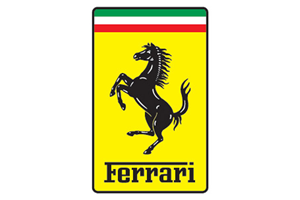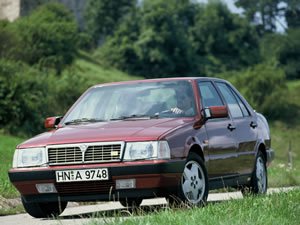


This edition of the Ferrari 308 GTB QV 3.0l V8 is the 5 speed / Manual version and was first brought out in 1982. This was at around the same time as the introduction of the 1982 Fiat X1/9 1.5 8V and the 1982 Lamborghini Countach LP500S.This particular Ferrari 308 has a 2927cc Naturally Aspirated Petrol powerplant with 8 cylinders in a V formation.
The 308 shares its Petrol V8 engine configuration with the likes of the 2023 Dodge Challenger SRT Demon 170 and the 2023 Ferrari SF 90 XX Spider 4.0 V8 Turbo. If you're looking for other fast cars which share the 308's Rear Wheel Drive, Coupe combination then how about the 1982 Fiat X1/9 1.5 8V or the 1965 Aston-Martin DB6 1965.
Weighing in at 1275 kgs (2810 lbs) this makes the Ferrari 308 GTB QV 3.0l V8 in the same weight category as the 2023 Pagani Utopia 6.0 V12 Twin Turbo or the give or take 50kg.
![Mini Cooper John Cooper Works Cabrio 2.0 Turbo - [2022] image Mini Cooper John Cooper Works Cabrio 2.0 Turbo - [2022] image](/editionimages/2340.jpg)
The Ferrari 308 shares the same bhp with the 2022 Mini Cooper John Cooper Works Cabrio 2.0 Turbo (228 bhp)
In terms of power the 2927cc 32V V8 engine produces 237 bhp (176 kW) @ 7000 rpm similar to the 2022 Mini Cooper John Cooper Works Cabrio 2.0 Turbo (228 bhp) or the 2020 Lotus Elise Cup 250 1.8 Supercharged (243 bhp).
The Naturally Aspirated V8 throws out 192 lb-ft (260.3 Nm) @ 5000 rpm placing it with cars of similar torque performance figures such as the 2020 Audi A1 A1 Sportback 35 TFSI S tronic S line (184 lb-ft) or the 2020 Abarth 695 70th Anniversario 1.4 Turbo (184 lb-ft).
If one combines the weight with power or torque performance for the Ferrari 308 you can get a better idea of it's real world performance.
The Ferrari 308 has a Power to weight ratio of 185.8 bhp per ton and 150.5 lb-ft per ton. Bhp Per Ton figures of the 1982 308 competing with the 1964 Pontiac GTO 6.4 V8 (210.7 bhp per ton) or the 1966 Ferrari 365 California 4.4 V12 (210.6 bhp per ton).
If you agree with the late great Carroll Shelby then arguably an even better indicator of potential performance, Torque. Use weight as well and you end up with - Torque per ton, with the Ferrari 308 generating around 150.5 lb-ft per ton. If you're curious as to what other cars have as much torque to weight then look no further than the 1985 Ford RS200 1.8T 16V (175.4 lb-ft per ton) or the 2013 Ford Taurus SHO 3.5 V6 Performance Pack (175.4 lb-ft per ton).
With a 0-60mph time of 6.70 secs or a 0-100km/h (0-62mph) of 6.9 secs, this made the Ferrari 308 GTB QV 3.0l V8 as fast as the 2020 Ford Puma ST 1.5 Turbo (6.70 secs) the 2017 Maserati Levante 3.0 V6 Diesel (6.70 secs) the 2012 Abarth 695 Edizione Maserati 1.4 Turbo (6.70 secs) the or the 2012 Dodge Charger SXT Blacktop 3.6L V6 (6.70 secs). This Ferrari 308 GTB QV 3.0l V8 is also faster than the 2017 Dodge Charger SXT AWD 3.7 V6 (6.80 secs) the 2015 Renault Megane Energy TCe 205 GT 1.6 Turbo (6.80 secs) the 2012 Mini Cooper John Cooper Works Countrman (6.80 secs) the and the 2010 Alfa-Romeo Brera JTS 3.2 V6 24v (6.80 secs).
When talking about the performance of the Ferrari 308 on the drag strip it can reach a quarter mile in an estimated 14.36 secs @ 95.3 mph. Similar performance down the quarter mile can be found with the the 2002 Alfa-Romeo 147 GTA (14.30 secs), the 2006 Bentley Arnage T 6.8 V8 4d Auto (14.30 secs), and the 2015 BMW 3 Series 335d xDrive LCI Touring F31 (14.32 secs).
Modern performance cars are often artificially restricted to 155mph. The 1982 version of the Ferrari 308 GTB QV 3.0l V8 has a maximum speed of 156mph.
If maxing out your car on the AutoBahn is your thing and you're wondering what's faster than the 1982 Ferrari 308 GTB QV 3.0l V8 then how about the 2010 Dodge Challenger SRT-8 6.4 V8 392 (167 mph), the 2001 TVR Chimaera 500 5.0L V8 (167 mph), or the 1993 TVR Griffith 500 (167 mph).










Audi R8 6.0 Quattro V12 TDI
Engine: Naturally Aspirated Diesel | 5934cc 48v V12
Top Speed: 186 mph
0-60mph: 4.20 seconds

Renault Clio 2.0 RenaultSport III 200 Cup
Engine: Naturally Aspirated Petrol | 1998cc 16v St4
Top Speed: 226.9 kph
0-100kph: 7.1 seconds



















